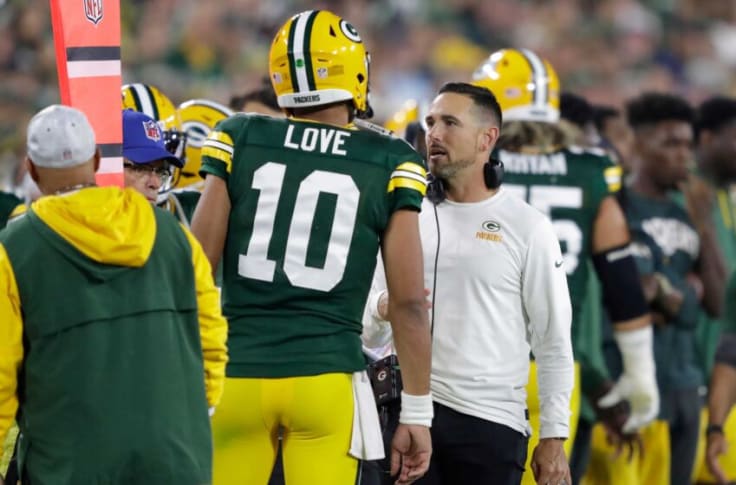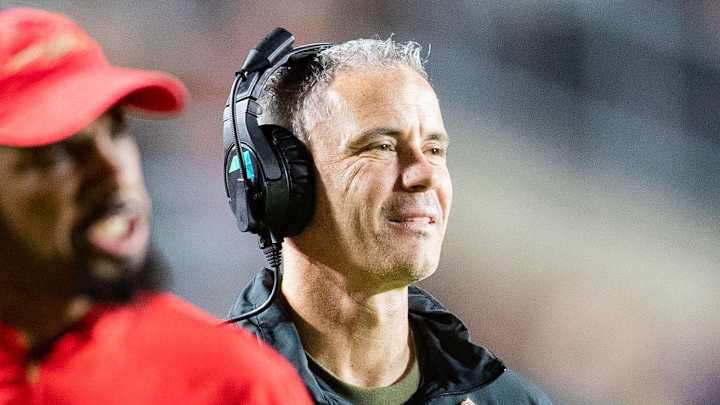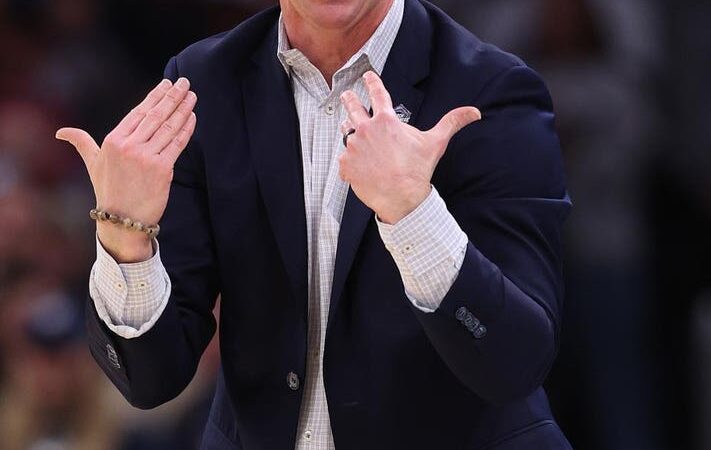8 Things that have gone wrong for the Packers on offense

The Packers’ offense has struggled in 8 different ways.
In the most recent games, the Green Bay Packers offense has been losing ground. Here is a closer look at what specifically went wrong this season and what needs to be fixed.
It would be an understatement to say that Jordan Love and the offense have experienced a rollercoaster of a first five games of the season.
The offense has struggled to move the ball or score points over the past two weeks after a 2-1 start that featured 38 points against Chicago and a comeback victory against New Orleans.
The Packers are only scoring six points on average in the first half of their games against Detroit and Las Vegas, averaging just 16 points overall. The offense’s issues lead to a lack of complementary football and increase the pressure on the defense, which has also had its ups and downs.
The offense the Packers are running at the moment doesn’t seem to have much of a personality.
There isn’t one player or one key idea they can rely on to spark their performance when they need a big play, a first down, or they need to get out of a rut.
Unfortunately, a football team’s problems almost never stem from a single factor.
It frequently represents the culmination of a number of things, or even many.
Here are eight elements that have been crucial to the Packers’ offensive success this season, keeping that in mind.
accuracy of Jordan Love’s long shots.
Jordan Love has demonstrated this season a willingness to advance the ball. His 24 passes of 20 yards or more are tied for the fourth-most in football.
He has, however, had trouble connecting with them using his receivers.
In those pass attempts, Love had a completion percentage of 25%, which places him 31st in the NFL.
Defenses can shrink the field, play closer to the line of scrimmage, and muck up the middle of the field when they aren’t concerned about being outmuscled over the top.
Consequently, there is less room to maneuver, making moving the ball in the run game or on underneath routes more difficult.
a run game that fails.
Throughout the entire campaign, the Packers have had trouble moving the ball on the ground.
With 3.5, Green Bay currently ranks 26th in yards per carry, but even that figure is a little inflated because of some significant gains made by Love on scrambles.
Of course, having Aaron Jones back will be beneficial, but that won’t make all of these issues go away.
Even for a playmaker of Jones’ caliber, gaining yards won’t be simple due to the consistently bad blocking.
The offense finds itself behind the sticks and in situations where passing is likely when it is unable to gain yards through the run game on early downs.
Moving the ball through the passing game is made more challenging by the defensive front’s ability to pin its ears back and the defense as a whole being able to enter advantageous matchups.
As a result, there are fewer long drives and punts, and the defense must cover more snaps.
At wide receiver, inexperience is evident.
Love’s low completion percentage is his fault, but there are many instances where the tight end and receiver’s inexperience and inexperience have also played a part. Overall, the routes don’t pay enough attention to the little things, which changes where and when Love anticipates the pass-catcher to be. These young pass catchers have also had trouble making contested catches, they have allowed physical coverage to throw off the timing of their routes, and as Love mentioned prior to the Las Vegas game, unscouted looks from the defense have also been a problem.
The Packers currently have a limited playbook.
Since he is the head coach and play caller, Matt LaFleur is not exempt from responsibility for the offense’s early difficulties, but to some extent, he is constrained.
Defenses really have nothing to worry about because the Packers don’t have a strong running game or the ability to complete passes downfield.
As was already mentioned, defenses are currently able to clog up play over the middle, preventing quick throws and giving pass catchers no chance to move into space.
LaFleur currently has a small working area and can only dial up so much.
In addition, the players’ overall performance has been, at best, inconsistent.
The Packers are caught in a vicious cycle, and their options are limited unless they can improve their consistency on those deep balls to improve spacing or their effectiveness on the ground to increase their opportunities in the passing game.
LaFleur needs to start over from scratch.
Returning to the fundamentals or the basics when things aren’t going well in some areas is frequently a positive step.
The Packers must understand what the LaFleur offense is ultimately trying to achieve during this bye week and then correctly execute on those details.
What this offense is expected to do at times feels overly complex for a team that frequently struggles to execute on the minor details in order to provide opportunities for the players.
The run game is a good illustration of this.
Asking Green Bay to execute an end-around against the Raiders, where six or seven blocks have to be executed perfectly while on the move in order for the play to work out, isn’t the best option because they can’t reliably create running lanes in outside or inside zone runs – key concepts of the LaFleur offense. The best circumstances for the players’ success must be created.
Early on in LaFleur’s leadership, we heard a lot about the illusion of complexity, which, in brief, aids in keeping offensive concepts straightforward while potentially confusing the defense. This is achieved through movement, running a variety of plays from a small number of personnel packages to create mismatches and restrict the defense’s ability to substitute, as well as running like-plays that look similar at first but differ significantly by the time they reach their final destination.
This offense needs to get back to using concepts that build on each other and letting the scheme handle some of the heavy lifting.
Injuries.
The Packers have suffered a lot from injuries, especially on the offensive side of the ball.
Aaron Jones has participated in just two games, one of which was cut short and the other he was unable to complete.
Only Week 4 saw the debut of Christian Watson.
David Bakhtiari, Elgton Jenkins, Jon Runyan, and Zach Tom have all been injured, and David Bakhtiari is out for the season. Elgton Jenkins missed about two and a half games. Love has yet to start both his preferred five offensive line starters and all of his skill position players in a game this season.
not making adjustments in time.
The Packers’ third-quarter scoring offense ranks among the best in all of football, demonstrating that whatever changes they make at halftime are effective.
But things can’t wait until halftime to start getting better.
They should have been trailing Las Vegas by a large margin at that point as they were trailing both New Orleans and Detroit by three scores.
It’s not as if LaFleur could throw out the entire game plan and start over because Jones was such a last-minute scratch against Las Vegas.
He had to make do with what had been established to some extent over the course of the week.
However, Patrick Taylor had more targets at the half than Romeo Doubs and Christian Watson put together.
Those targets, in my opinion, were in the game plan with Jones in mind.
They need to do a better job of getting the ball into the hands of their playmakers, as LaFleur said after the Detroit game, even if that means fabricating those touches.
Naturally, the coaching staff is responsible for making timely adjustments, but for some of the previously mentioned factors, including the need for attention to detail and difficulties with unscouted looks, the Packers’ inexperience on offense also puts them at a disadvantage.
In the last two games, pass blocking.
The Packers offensive line has made a complete 180o turn in recent weeks after being one of the best pass-blocking units in football for three weeks.
Maxx Crosby and Malcolm Koonce, the Raiders’ edge rushers, pressured Love on about one-third of his dropbacks against the Lions, while PFF estimates that Love was pressured on close to 50% of his dropbacks overall.
When the coverage was good in Weeks 1 through 3, Love threw six touchdown passes and just one interception.
However, over the last two games, Love has thrown five interceptions.
Since he had more time in the pocket, he was able to progress slowly and give the young pass catchers more time to find openings.
Love’s internal clock, however, has now needed to change.
We’ve now observed a quarterback more willing to take chances and place the ball in the wrong places after he initially dealt with little pressure.




 Everyone
Everyone



